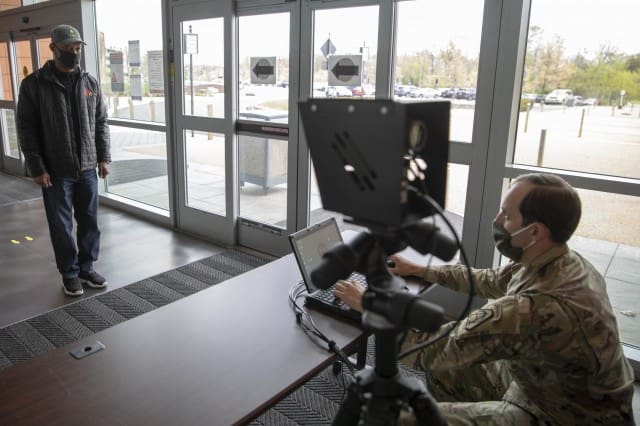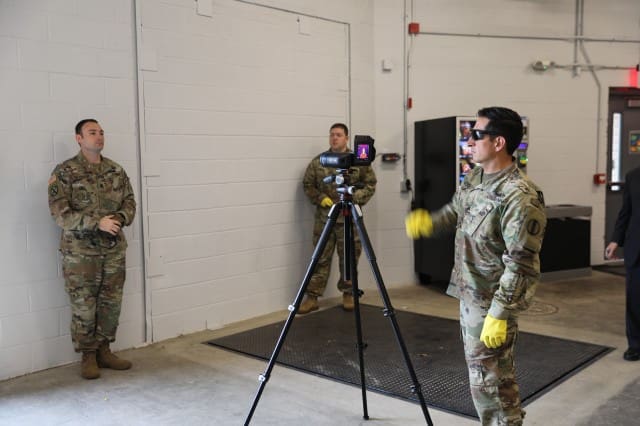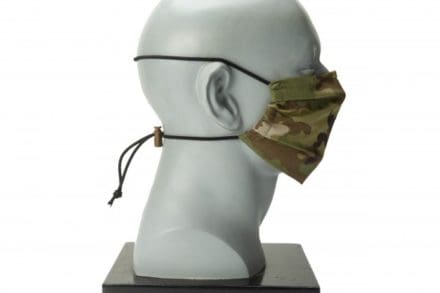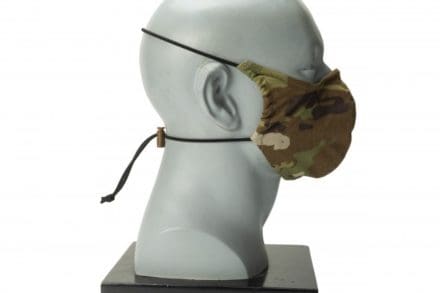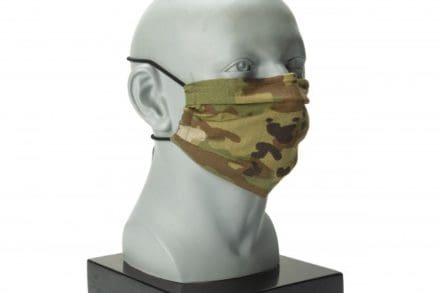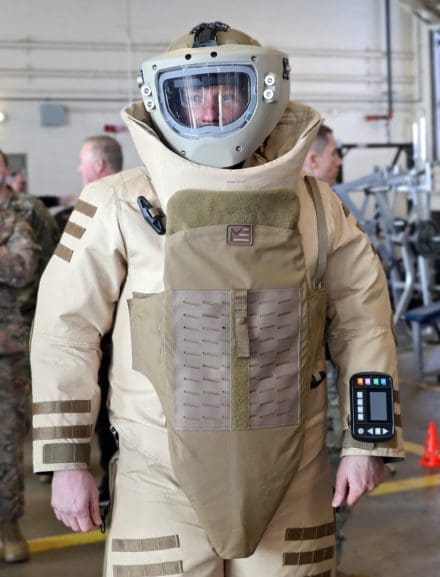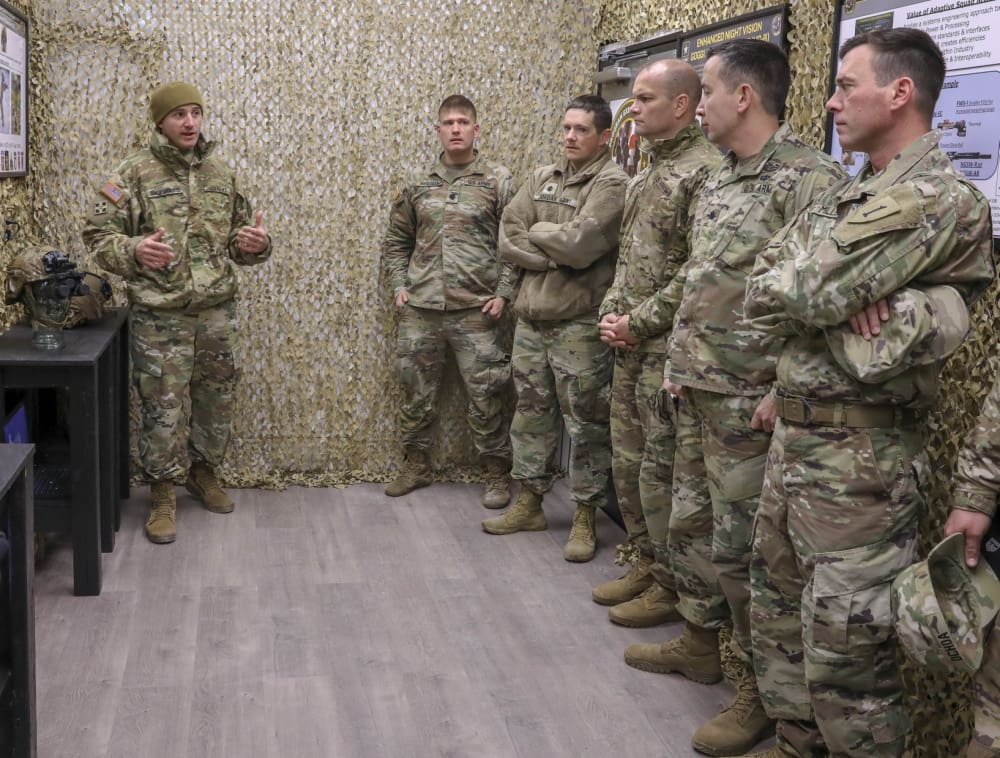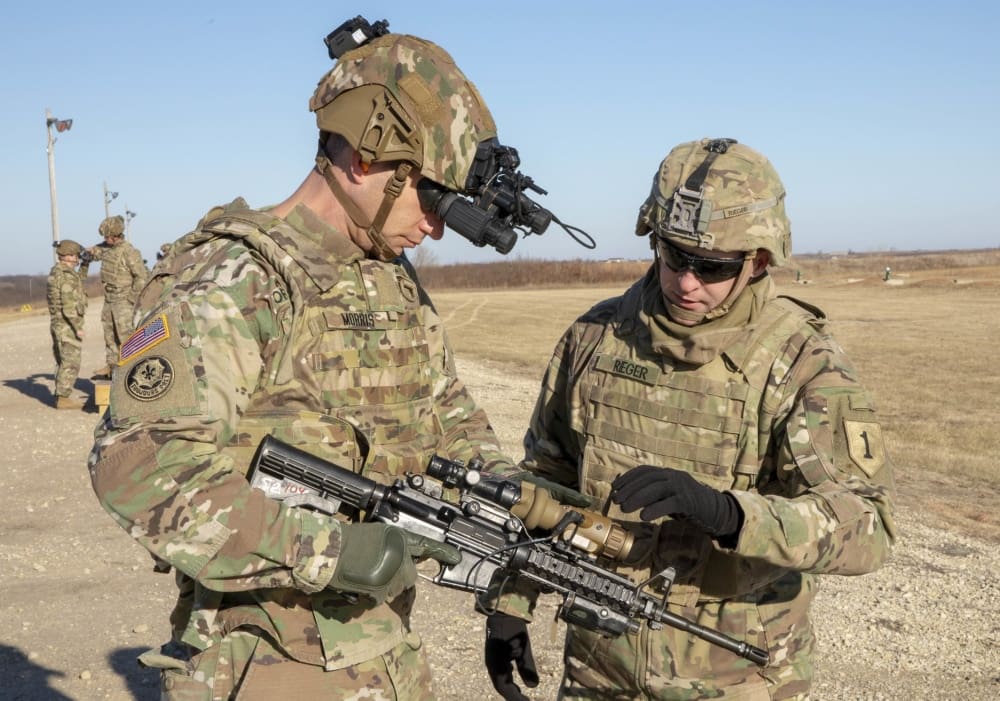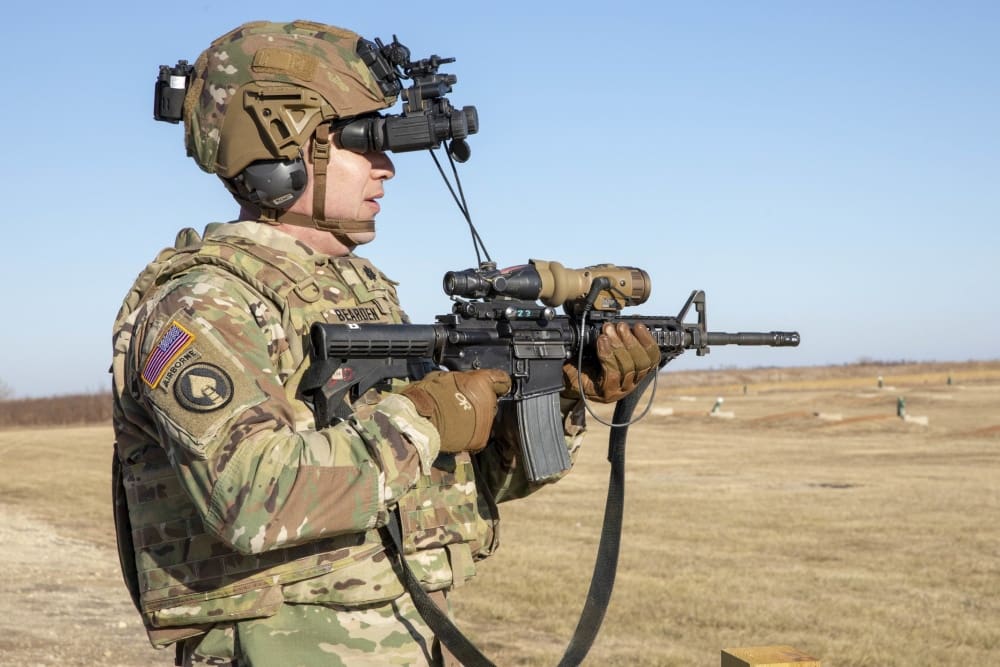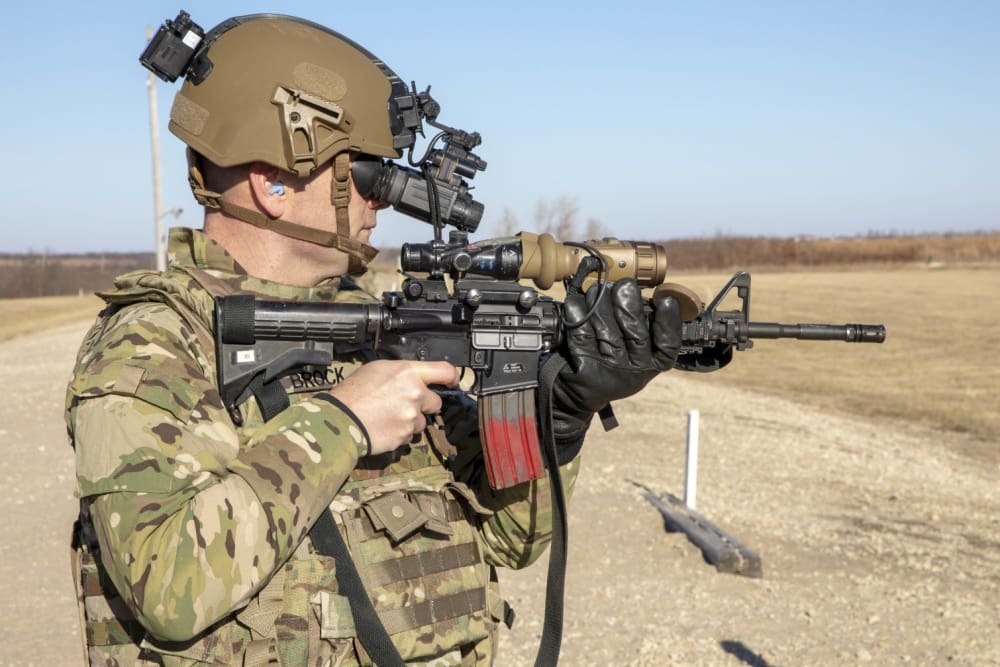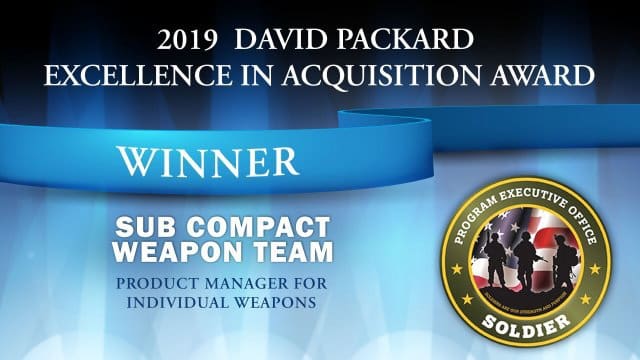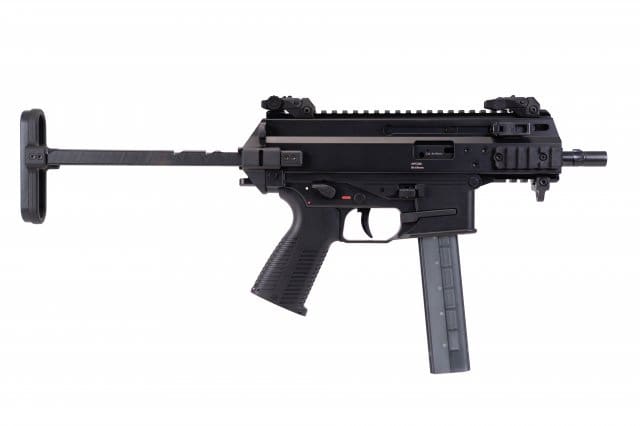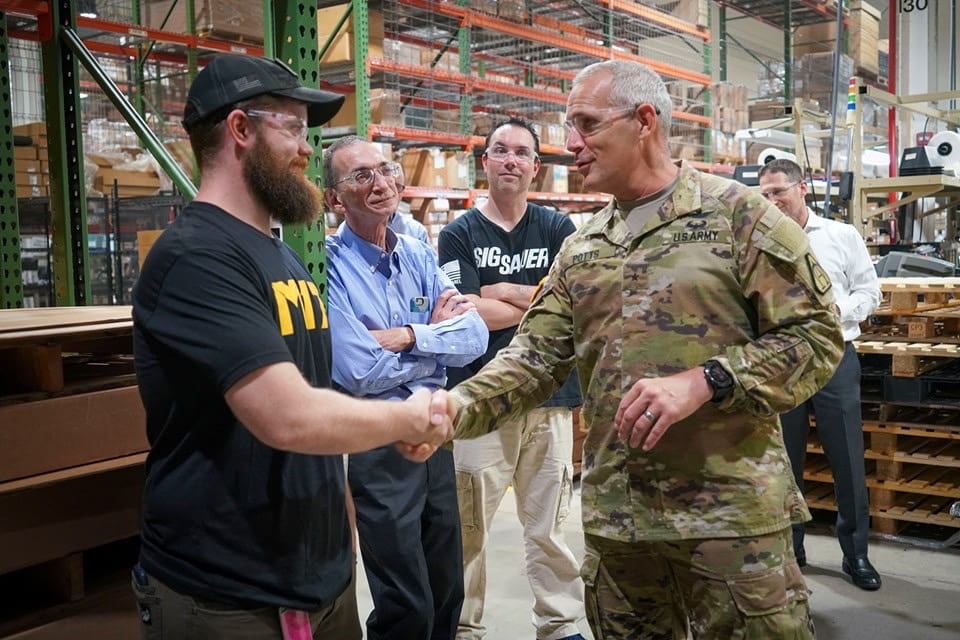FORT BELVOIR, Va. – Product Manager Soldier Protective Equipment (PdM SPE) held a change of charter to welcome Lt. Col. Stephen Miller as the new leader of the organization and recognize Lt. Col. Ginger Whitehead for her leadership, at Fort Belvoir, on May 27th.
A product team of Program Executive Office (PEO) Soldier’s Soldier Survivability (SSV) program office, SPE is charged with improving the lethality and mobility of the force by optimizing Soldier protection and effectively serving as the Lifecycle Manager for all personal protective equipment (PPE).
“I truly look forward to leading and working with the SPE team as we continue to improve Soldier lethality and survivability, by focusing on the key priorities that Ginger set out,” said Miller. “I intend to continue providing the right capabilities to the right Soldiers at the right time.”
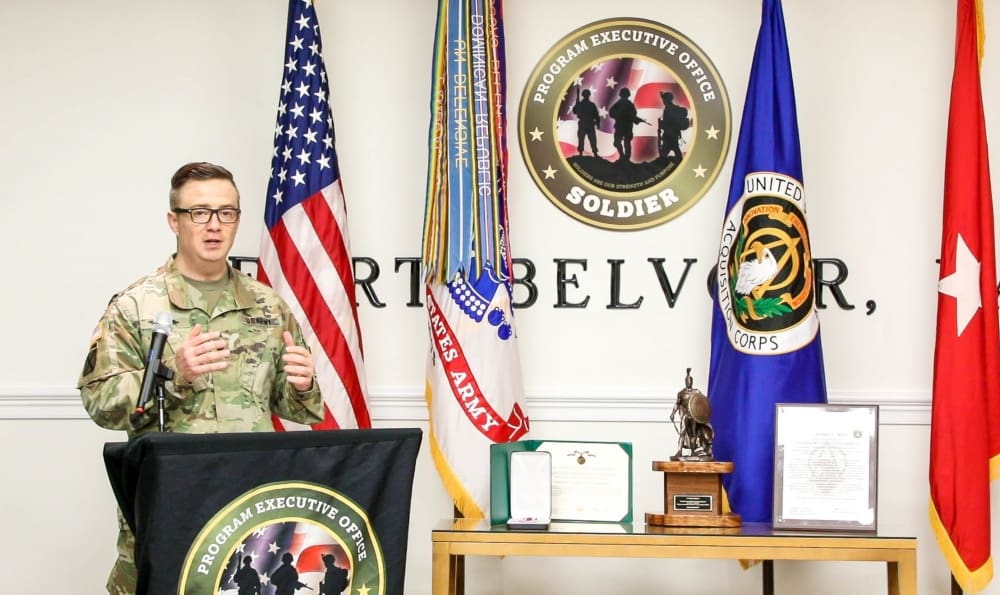
Miller arrives at PEO Soldier after serving as an Army Acquisition Fellow, assigned last year to Microsoft as part of the Training With Industry Program. His other recent assignments include positions in the offices of the Assistant Secretary of the Army for Acquisition, Logistics, and Technology (ALT) and the Deputy Assistant Secretary of the Army for Plans, Programs, and Resources. Miller has been a member of the Army Acquisition Corps since 2009 and served as the Chief of Soldier Systems at the Maneuver Center of Excellence (MCoE) at Fort Benning, Ga. Many of the capability requirements for which he was responsible for at MCoE are for the programs being developed and procured now at PdM SPE. During his career, Miller deployed twice to Afghanistan and once to Iraq.
Miller said that SPE will “continue to pursue innovative solutions as routine practice.”
Miller’s portfolio now includes the Soldier Protection System (SPS), which includes the Next Generation Integrated Head Protection System (NG IHPS), Vital Torso Protection (VTP Shooter’s Cut), and the Torso and Extremity Protection (TEP). He is also responsible for the team that provides quality and testing support of all legacy Personal Protective Equipment (PPE) items as well as the Next Generation Advanced Bomb Suit (NGABS).
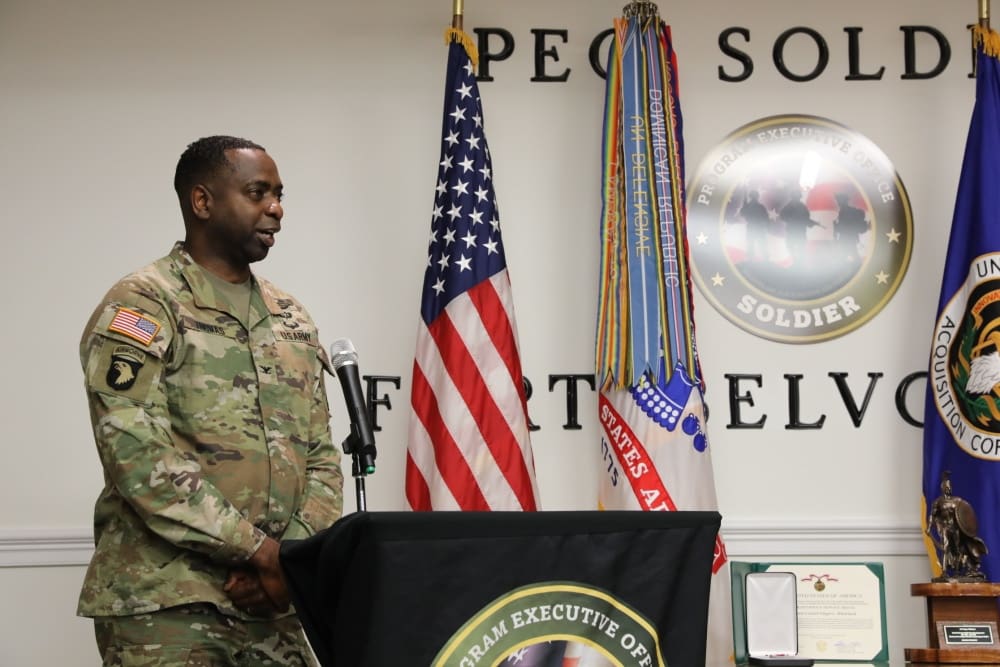
Col. Stephen Thomas, Project Manager Soldier Survivability (PM SSV) hosted the change of Charter. He highlighted Whitehead’s achievements during her tenure and presented her with the Meritorious Service Medal before the official change of charter.
“When I think of Ginger, I think of the word ‘trailblazer,’ just because of the numerous things she’s accomplished during her time as product manager,” said Thomas.
Whitehead’s tenure featured progress on the production of the NG IHPS, which provides greater levels of protection and interoperability with a range of night-vision devices for the wearer. The office further developed components of the SPS, the Army’s next generation and first ever-complete capability set of body armor, which includes a Blast Pelvic Protector (BPP), gender-specific Ballistic Combat Shirts (BCS), and a Modular Scalable Vest (MSV) that is lighter in weight than any of its predecessors and provides superior scalable protection and flexibility. The BPP, BCS and MSV are all subsystems of the of the SPS TEP.
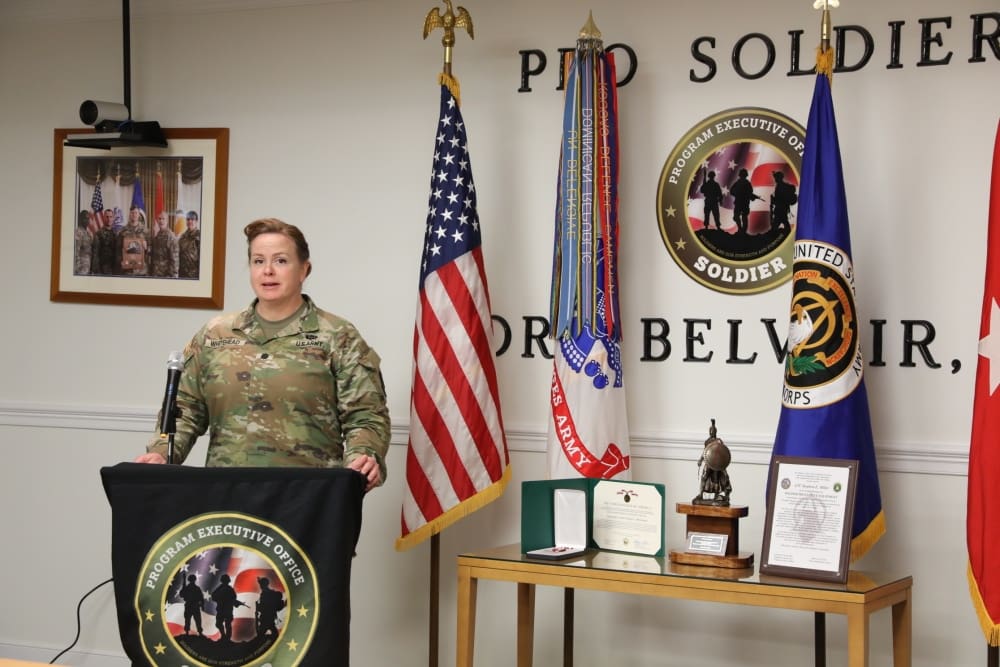
“What we have today is lighter, better, more capable body armor that is light years ahead of anything we had in the last 10 to 15 years,” said Whitehead.
Recapping her time as product manager, Whitehead said one her proudest moments was participating in a PPE return ceremony. Last year, SPE presented Staff Sgt. Bryan McQueen the Enhanced Combat Helmet that stopped a 7.62x54mm round from fully penetrating the helmet’s shell, saving the Soldier’s life. She described it as “a powerful moment that underscores the importance of what we do on a daily basis.”
“We recognize that success is never owned, it is merely leased, and the rent is due daily,” said Whitehead.
Whitehead also thanked the Soldiers and civilians of SPE and said they will drive on with the mission in the years ahead.
“You are assuming responsibility of a phenomenal team that will stop at nothing to support the warfighter,” she told Miller.
Whitehead will next serve as Senior Acquisition Officer and Acquisition Branch Chief with the Army Futures Command at Fort Leonard Wood, Mo.
“I am sure [she will] take the same level of tenacity and ‘get the job done’ as she has here as the product manager,” said Thomas.
Story by Fred Shear
Photo by Courtney Bacon


